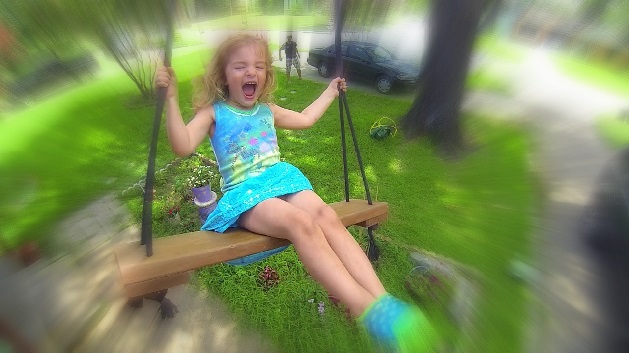When I first found out that besides being an amazing source of fun and positive energy for kids, play swings are actually extremely beneficial for their physical development from early age, I was amazed and was wondering how could I have neglected that fact. The swinging movement seems to enhance the hearing system and build core strength in children. It’s also the type of movement that delivers a calming effect, so it’s also very beneficial for overstimulated children.
I know how much you love it when your kids are all smiling and screaming of joy when they hit the playground; it’s like they enter an entirely new world in which only they live. But I also know how much you hate it when you have to prepare them, yourself, get food and drinks and spend another hour or two watching after them while they play in the playground a couple of kilometres away from your home. This means you have to get a cab, or the car, or God forbid – public transport (controlling kids with extra energy with bags in your hands in a crowded metro? I don’t think so). The obvious solution for this common situation would be very simple: install play swings in your own backyard.

Play swings are the type of playground elements your kids can use for a long period of time, depending on the type you get. So, here are a few guidelines you need to know when you go shopping for play swings:
Where will you place them?
It doesn’t have to be the backyard, it can be the porch as well, of course if it’s large enough. Play swings need a lot of space, at least a 2 meters wide room. Another thing to think about in advance here is the fall zone. A fall zone is the surrounding area around the play swings. It should be made of protective material so that, if by any chance a child falls off, he will land on a safe surface.
Types of swings
There are various types of swings on the market; it all really depends on the type of outdoor area design you have, your personal preferences and a few other things.
- Porch swings – these are normally made of wood or plastic and designed as a bench hanging from the porch’s roof. As such, they are more used as porch furniture than as a play toy for children. They’re large enough for two or three people to swing on them, and designed for swinging at minimum heights. Canopy and hammock swings can also be placed on the porch, since they’re highly suitable for outdoor areas.
- Playground swings – these can stand as one swing alone, or can be accompanied with more swings hanging from the same pole structure. They are hung with either covered or exposed chains with seats made of wood, metal, plastic or rubber.
- Infant/toddler swings – the difference between toddler/infant swings and other types is the seat; the seat mainly has a bucket shape, has holes for the legs and a safety belt. After all, these are swings for toddlers, so it’s only normal for them to come with the highest level of protection.
Materials and safety
The choice of material for making the swing means a lot, especially when safety is in question. For that matter, plastic and rubber are safer than wood and metal. And that’s just expected, because plastic and rubber are easier, softer materials that wood and metal are. Just make sure that once you get yours, you inspect them for potential sharp edges and exposed nails to avoid injuries. Also, try to avoid the S-hooks which often catch and damage clothes.

